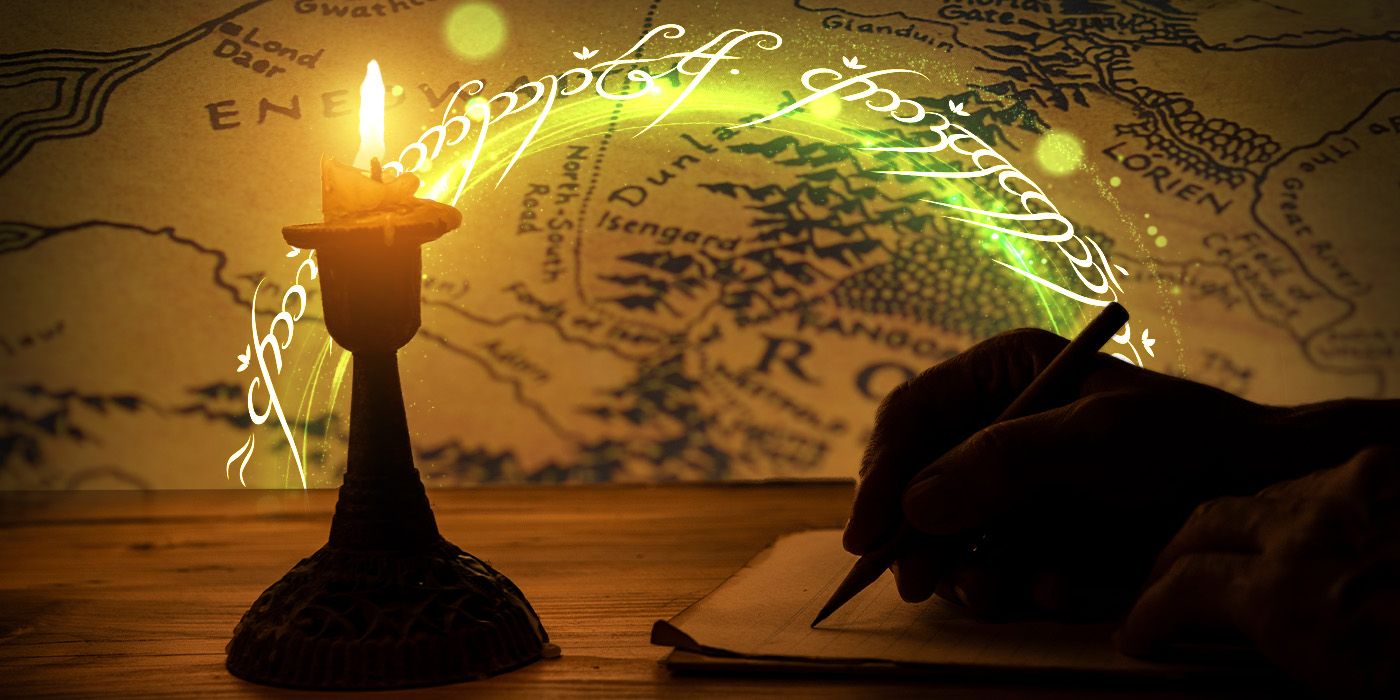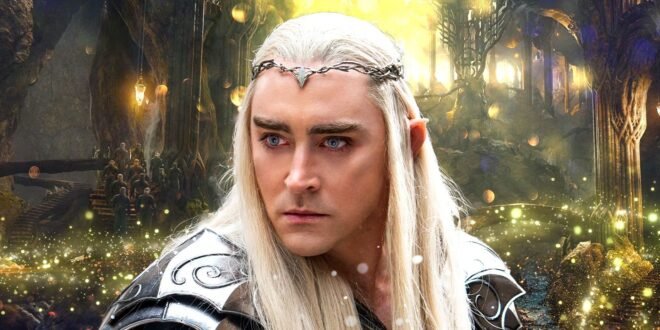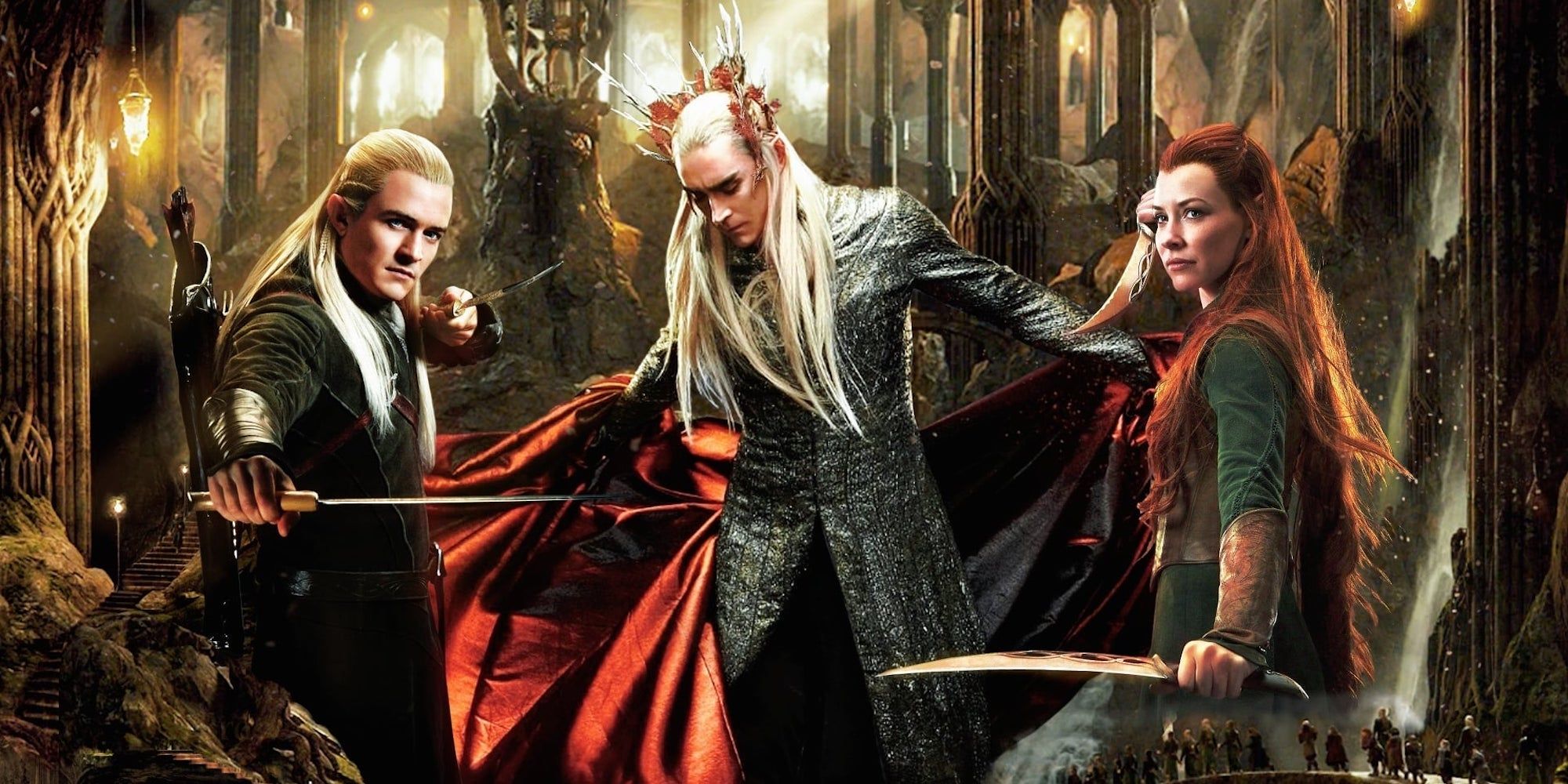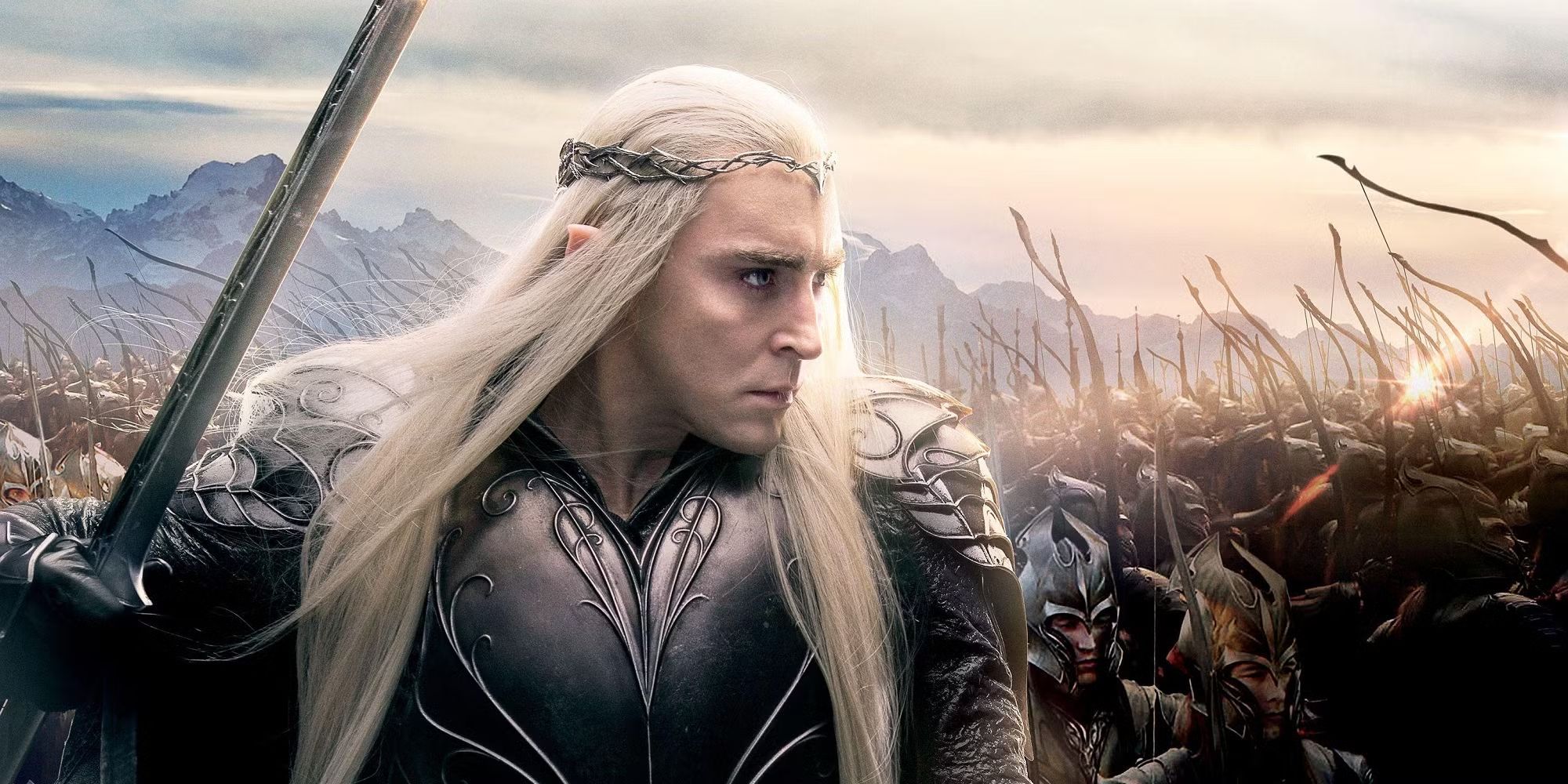The dark, dreary, and dangerous forest of Mirkwood and its enigmatic leader, Thranduil the Elvenking (Lee Pace), play a pivotal role in J. R. R. Tolkien’s The Hobbit book and a significantly larger one in director Peter Jackson’s film trilogy adapting said novel. Although the first film, The Hobbit: An Unexpected Journey, features Mirkwood the most as a location, all three movies expand upon Thranduil’s flawed leadership where his region of Middle-earth is concerned, as well as the White Council’s investigation into a mysterious sorcerer known only as the Necromancer (spoiler, but not really: it’s Sauron in disguise). Once the final frame of The Hobbit: The Battle of the Five Armies fades to black, Mirkwood doesn’t reappear in The Lord of the Rings except for one extremely key, but off-screen, incident. Likewise, what fate befalls Thranduil’s realm — and the regal Elvenking himself — during the War of the Ring can only be found in Tolkien’s legendarium, not his main tomes.
How Did Sauron Corrupt Mirkwood in The Lord of the Rings?
One could assume Mirkwood is an unimportant location, given how it almost vanishes from Tolkien’s pages after The Hobbit‘s self-contained adventure concludes. But the assorted posthumous notes the preeminent author left behind reveal Mirkwood, originally named the Woodland Realm or Greenwood the Great, to be the largest forest in all of Middle-earth. Clocking in at roughly 600 miles long and over 200 miles wide, bursting with magnificent green foliage and golden sunlight, a group of semi-rebellious Elves have populated the Greenwood since their ships reached Middle-earth’s shores. Rather than return to their homeland of Valinor as originally planned, these Elves decide to live their exceedingly long lives amidst Middle-earth’s beauty. According to the wishes of his compatriots, an elf named Oropher becomes Greenwood’s first official ruler. His son Thranduil inherits the title and responsibilities of the Elvenking after Oropher, a soldier recklessly participating in the Last Alliance of Elves and Men, dies fighting Sauron.
As Sauron slowly reassembles his power at the dawn of the Third Age, the Dark Lord’s threat to the Woodland Realm becomes clear. The mere suggestion of Sauron’s influence, let alone his actual presence, spreads death and decay into every corner of even the happiest and lushest lands. When the Dark Lord infiltrates Greenwood’s southern border under the guise of the Necromancer, he establishes a stronghold inside the fortress of Dol Guldur. From high atop the hill of Amon Lanc, Sauron unleashes Mordor-lite horrors upon the Woodland Realm and its inhabitants. Such life-threatening menaces include, but aren’t limited to, hallucinations, a literal darkness blanketing the sun-dappled copses, and the far-too-large spider children of the mammoth spider queen herself, Shelob.

Related
I Can’t Believe J.R.R. Tolkien Almost Retconned One of His Most Iconic Characters
Tolkien never got the chance to make these changes canon.
Thranduil and his fellow Wood-Elves defiantly refuse to surrender their home. Still, for their own safety, they retreat from Sauron’s shadow and congregate in the Woodland Realm’s northeastern corner. They also make use of a system of underground caves that, over time, becomes the spectacular sanctuary known as the Elvenking’s Halls. The neighboring Dwarves, at Thranduil’s request, carve intricate, elegant, and towering architecture out of the rocks and stones, as well as sustainable living quarters, a lavish throne room, and storage areas. Between Sauron’s undeniable encroachment upon the Greenwood and the effects of his dark magic appearing irreversible, the Wood-Elves designate their dying home with a more fitting title: Mirkwood.
Thranduil and Galadriel Make Their Final Stand Against Sauron in Mirkwood
It’s this Mirkwood that Bilbo Baggins (Martin Freeman), Gandalf the Grey (Ian McKellen), and Thorin Oakenshield’s (Richard Armitage) band of Dwarves venture into on their way to the Lonely Mountain. When they aren’t avoiding the forest’s traps and its barrage of nasty creatures, an irritated Thranduil waylays the group by tossing them into his dungeons. Decades after the events of The Hobbit, Tolkien next mentions Mirkwood in The Lord of the Rings‘ first volume, The Fellowship of the Ring. Thranduil dispatches his famous — and equally fabulous — son, Legolas (Orlando Bloom), from Mirkwood to the Council of Elrond to inform them of Gollum’s (Andy Serkis) escape from his imprisonment inside Mirkwood’s borders.
Appropriately enough, Mirkwood’s ultimate freedom arrives the same day as the legendary Battle of the Pelennor Fields. By this time, Sauron’s forces have morphed Dol Guldur into a secure and strategic stronghold for the Dark Lord. Intending to fully eradicate the lingering threat the Elves pose, Sauron launches a host of Orcs from Dol Guldur in a simultaneous strike against Mirkwood and Lothlórien. Thranduil responds by leading a long, grueling, and destructive battle against their foes, an incident referred to as the Battle Under the Trees. The fires of said fight devour a host of Mirkwood’s precious trees. Hope is not lost, however — once the celebrated Lady Galadriel (Cate Blanchett) and her husband Celeborn (Marton Csokas) arrive from Lothlórien with reinforcements, the Elves triumph over the Dark Lord’s army.
What Happens to Mirkwood After Sauron’s Defeat in The Lord of the Rings?
With Sauron finally, decisively defeated, Galadriel safely uses her own Ring of Power, Nenya, to exorcise Mirkwood of her enemy’s influence — including Dol Guldur, which Galadriel and Thranduil personally destroy brick-by-brick. Over time, the poor, wounded forest heals back to its former glory. To celebrate its survival and restoration, Celeborn and Thranduil rename the area Eryn Lasgalen, or the Wood of the Greenleaves, and agree to share leadership between themselves and their Woodmen allies. Thranduil takes the northernmost part his people have already been occupying, while Celeborn accepts the southern lands and christens them as East Lórien; the Men receive the middle stretch.
According to Tolkien’s notes, Thranduil remains in Middle-earth until at least the Fourth Age, apparently content to continue tending to the forest he spent centuries protecting. Meanwhile, some of the other Wood-Elves depart the Greenleaves to help Ithilien and Minas Tirith rebuild. Beyond these facts, Tolkien never mentions either Thranduil’s conclusive fate or what happens to the rest of the Wood-Elf population. Ultimately, they only have two choices: to remain in the home they’ve forged and fade into forest spirits once the age of Men fully inherits Middle-earth. Alternatively, they can sail back to Valinor, where the peaceful glories of the Valar — their light also dimmed by Sauron, but never extinguished — await their arrival. Either way, without Sauron’s meddling, and thanks to the heroic efforts of the Elvenking himself, no evil befalls the Eryn Lasgalen ever again.
Source link



